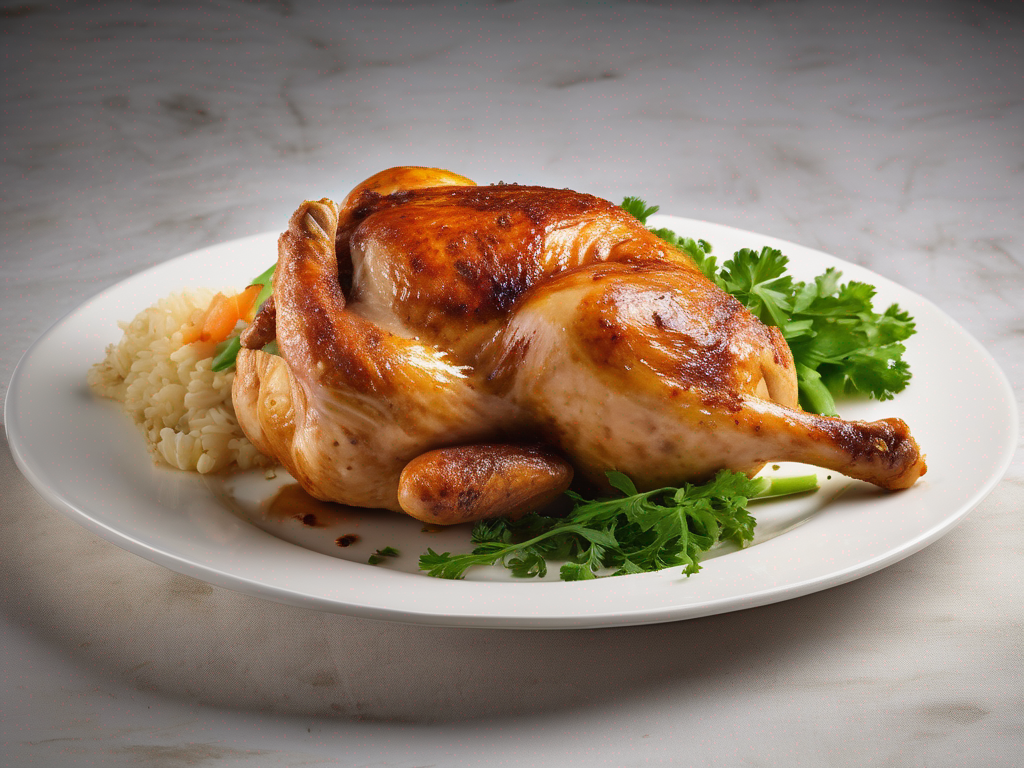
Keeping Your Fridge Safe: Preventing Cross-Contamination with Raw Chicken Ground Cooked
Get Your Free Food Safety Cheat Sheet
30 most common foods with instant answers. Print it and stick it on your fridge—completely free!
Keeping Your Fridge Safe: Preventing Cross-Contamination with Raw Chicken Ground Cooked
When it comes to food safety, one of the key areas to focus on is preventing cross-contamination in your fridge, especially when dealing with raw chicken ground cooked. Cross-contamination occurs when harmful bacteria from one food item spread to another, potentially leading to foodborne illnesses. In this blog post, we will discuss practical tips and safety information to help you prevent cross-contamination with raw chicken ground cooked in the fridge. (Chicken ground cooked)
Understanding the Risks of Cross-Contamination
Before we dive into prevention tips, it's essential to understand why cross-contamination is a significant concern, especially when dealing with raw chicken ground cooked. Raw chicken can carry harmful bacteria such as Salmonella and Campylobacter, which can cause food poisoning if not handled and stored properly. When raw chicken comes into contact with other foods in the fridge, these bacteria can transfer, putting you and your family at risk.
Consequences of Cross-Contamination:
- Foodborne illnesses
- Digestive issues
- Hospitalization in severe cases
Now that we understand the risks, let's explore some practical tips to prevent cross-contamination with raw chicken ground cooked in the fridge.
Proper Storage Practices
1. Store raw chicken ground cooked in airtight containers:
- Use sealed containers to prevent juices from raw chicken from dripping onto other foods.
- Consider using separate containers or bags to store raw chicken ground cooked to avoid direct contact with other items in the fridge.
2. Place raw chicken ground cooked on the bottom shelf:
- Store raw chicken ground cooked on the bottom shelf of the fridge to prevent any drips or spills from contaminating other foods below.
3. Keep raw chicken ground cooked away from ready-to-eat foods:
- Store raw chicken ground cooked away from ready-to-eat foods such as fruits, vegetables, and cooked meals to avoid any potential contamination.
4. Use color-coded cutting boards and utensils:
- Designate specific cutting boards and utensils for raw chicken ground cooked to avoid cross-contamination during food preparation.
Cleaning and Sanitizing Tips
1. Clean spills promptly:
- If any raw chicken juices spill in the fridge, clean them up immediately with hot, soapy water to prevent the spread of bacteria.
2. Regularly sanitize the fridge:
- Clean and sanitize your fridge regularly, especially after storing raw chicken ground cooked, to eliminate any lingering bacteria.
3. Wash hands frequently:
- Wash your hands thoroughly with soap and water before and after handling raw chicken ground cooked to prevent the spread of bacteria.
Safe Defrosting Practices
1. Defrost raw chicken ground cooked in the fridge:
- Defrost raw chicken ground cooked in the fridge instead of on the countertop to prevent bacteria growth at room temperature.
2. Use a separate container for defrosting:
- Place raw chicken ground cooked in a sealed container or on a plate to catch any drips and prevent cross-contamination with other foods in the fridge.
Conclusion
Practicing proper food safety measures is crucial when it comes to preventing cross-contamination with raw chicken ground cooked in the fridge. By following the tips outlined in this blog post, you can minimize the risks of foodborne illnesses and ensure the safety of your family. Remember to store raw chicken ground cooked properly, clean and sanitize your fridge regularly, and practice safe defrosting techniques to maintain a safe and healthy kitchen environment. Stay informed, stay safe! (Chicken ground cooked)
Authoritative Food Safety References
These agencies and university labs inform every tip and health precaution we publish.
USDA FoodKeeper – Cold Storage Guidelines
Official refrigerator, freezer, and pantry timelines maintained by the U.S. Department of Agriculture.
Visit USDA FoodKeeperFDA Produce Safety Rule & Grower Guidance
Field-to-fridge handling practices that prevent contamination of fruits, vegetables, and leafy greens.
Visit FDA Produce SafetyCDC Foodborne Illness Prevention Hub
Surveillance-backed guidance on pathogens, symptoms, and steps to reduce foodborne illness risk.
Visit CDC Food SafetyUC Davis Postharvest Technology Center
University research detailing optimal storage atmospheres for produce after harvest.
Visit UC Davis PostharvestPenn State Extension – Home Food Preservation & Safety
Peer-reviewed extension bulletins on safe canning, chilling, and reheating practices.
Visit Penn State ExtensionGet Your Free Food Safety Cheat Sheet
30 most common foods with instant answers. Print it and stick it on your fridge—completely free! Want more? Upgrade to the complete guide with 70+ foods.
Scan your food directly and get instant safety info using our AI-powered camera feature.